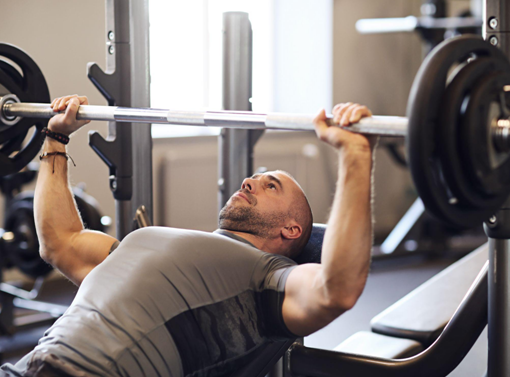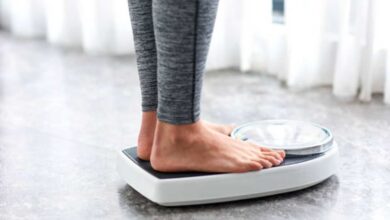
Equipment Needed
Bench presses are best performed at the gym due to the accessibility of an appropriate bench with an adjustable incline, as well as a barbell. Having said that, one can also perform bench presses at home on the floor or on a small table.
Proper Technique for Bench Press
Performing bench presses with the proper form and technique is the first step towards successfully building your upper body.
Getting into Position
– For a standard bench press, keep the bench parallel to the floor.
– Lie flat with your back on the bench, with your feet firmly planted on the ground.
– Position your body such that your chest is aligned with the barbell.
– Grip the barbell with hands slightly wider than shoulder-width apart, with your palms facing away from you (overhand grip).
– Take your time at this stage and ensure all your positions are in order.
Lowering the Barbell
– Once you have gripped the barbell, lower it in a controlled manner to your mid-chest. Keep your elbows at a 75 to 90-degree angle to your body.
– Breathe in as you lower the bar to engage your core and stabilise your body.
Lifting the Barbell
– Once you have lowered the barbell to your chest, the next step is lifting it back up.
– Push the barbell upwards in a straight line by extending your arms fully. Slowly exhale while you’re doing this.
– Keep your shoulder blades squeezed together to maintain stability and prevent excessive strain on your shoulders.
– Practice 6-12 reps for 3-4 sets for an effective bench press workout.
Safety Tips For Bench Press
– Start with smaller weights and increase them gradually.
– Let a spotter stand behind you when lifting very heavy weights to assist you.
– Avoid excessive arching of the back, as it can lead to injury.
Bench Press Benefits
– Improved Upper Body Strength: The bench press primarily targets the pectoral muscles, deltoids, and triceps, leading to improved upper body strength and muscle development.
– Better Functional Strength: Strengthening these muscles aids in performing daily activities that involve pushing movements, such as lifting objects or pushing doors open.
– Increase Muscle Mass: Bench presses are excellent exercises to bulk up your chest and shoulders and increase muscle mass. If you’re looking to build a sculpted and imposing physique, bench presses should be your go-to exercise.
– Increased Bone Density: Studies have shown that weightlifting exercises like squats, deadlifts, and bench presses can increase bone density and improve osteoporosis.
Bench Press Variations
There are plenty of modifications one can do to the standard bench press to develop more muscles or direct the load towards other chest muscles.
Incline Bench Press
If you adjust the bench inline to 30-45 degrees and perform the bench press, it is called an incline bench press. Introducing this incline targets the upper chest more as compared to a traditional flat bench press.
Decline Bench Press
Setting the bench at a decline angle of around 15-30 degrees with your head lower than your feet directs the load towards the lower pectoral muscles.
Dumbbell Bench Press
Using dumbbells instead of the barbell allows for a greater range of motion and works on muscle imbalances. Lie flat on a bench and press a dumbbell in each hand instead of a barbell.
Close-Grip Bench Press
This variation focuses more on the triceps by bringing your hands closer together on the barbell. Keep your elbows tucked in as you lower and press the barbell.
Thus, the bench press is a versatile and effective exercise for building upper body strength and muscle mass. By mastering the proper techniques and incorporating various bench press variations into your routine, you can target different chest muscles and build a bulging chest.
If you’re looking to master the bench press, download the FITPASS app and start finding the best gyms in Mumbai, Bangalore, Ahmedabad, Kolkata and many other metro cities across India.
FAQ
1: How much does a bench press bar weigh?
The bench press bar (without added weights) weighs around 20 kg.
2: How to increase bench press strength?
Start practising bench presses regularly and gradually increase the weights in order to improve your bench press strength.
3: Does bench press work shoulders?
Yes, bench presses work on the anterior deltoid muscle which is a muscle located at the front of the shoulder.







